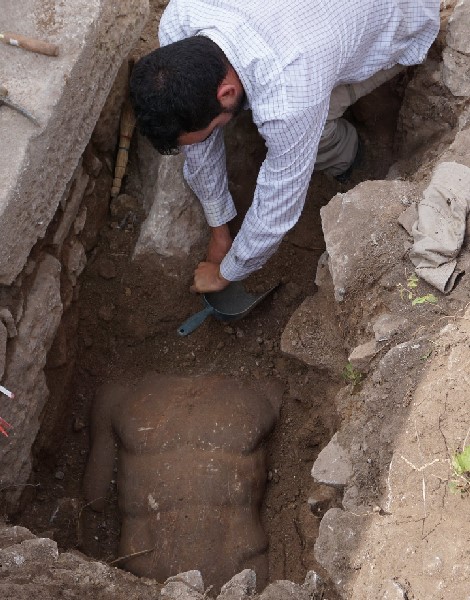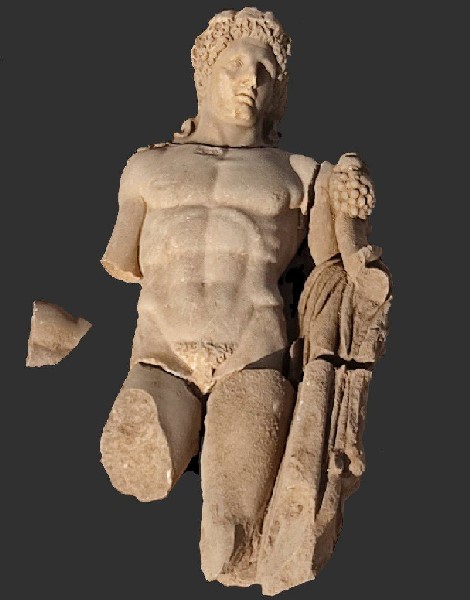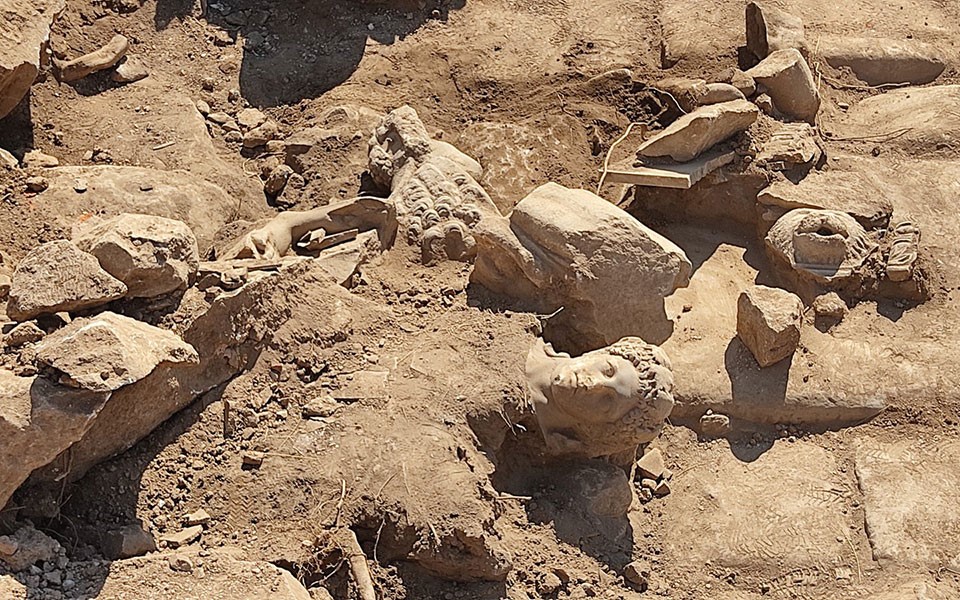The latest season of archaeological fieldwork at Philippi in northeast Greece, carried out by members of the Aristotle University of Thessaloniki, came to an end last week with a startling new discovery.
This year’s excavations, led by Professor Natalia Poulou, focused on the east side of one of the main streets of the ancient Macedonian city, which meets another main axis passing further north. The point of convergence between the two streets is marked by a large square dominated by a richly decorated edifice, most likely a public fountain.
The edifice bore a special architectural decoration, fragments of which were discovered during the excavation. Its decoration was complemented by an impressive larger than life-sized statue from the Roman period, dating to the 2nd century AD.

© Hellenic Ministry of Culture and Sports

© Hellenic Ministry of Culture and Sports
The statue depicts a youthful Hercules, the Roman equivalent of the Greek Heracles, holding a club – fragments of which were found during the excavation – and a lion’s pelt hanging from his outstretched left hand, attesting to the identity of the hero. He is also depicted wearing a wreath of vine leaves with a tape at the back, the ends of which drape across his broad shoulders.
According to the research team, and based on the findings from the excavation, the statue adorned a much later building from the 8th or 9th century. It is known form contemporary sources that Classical and Roman-era statues were used to decorate buildings and places of public use up until the Late Byzantine period.
The discovery at Philippi now confirms this to be the case – that pre-Christian statues were used to decorate public spaces in important cities of the Byzantine empire.
The excavations, attended by 24 students and funded by the Research Committee of the Aristotle University of Thessaloniki, will continue next year.
This article was previously published in Greek at kathimerini.gr.











